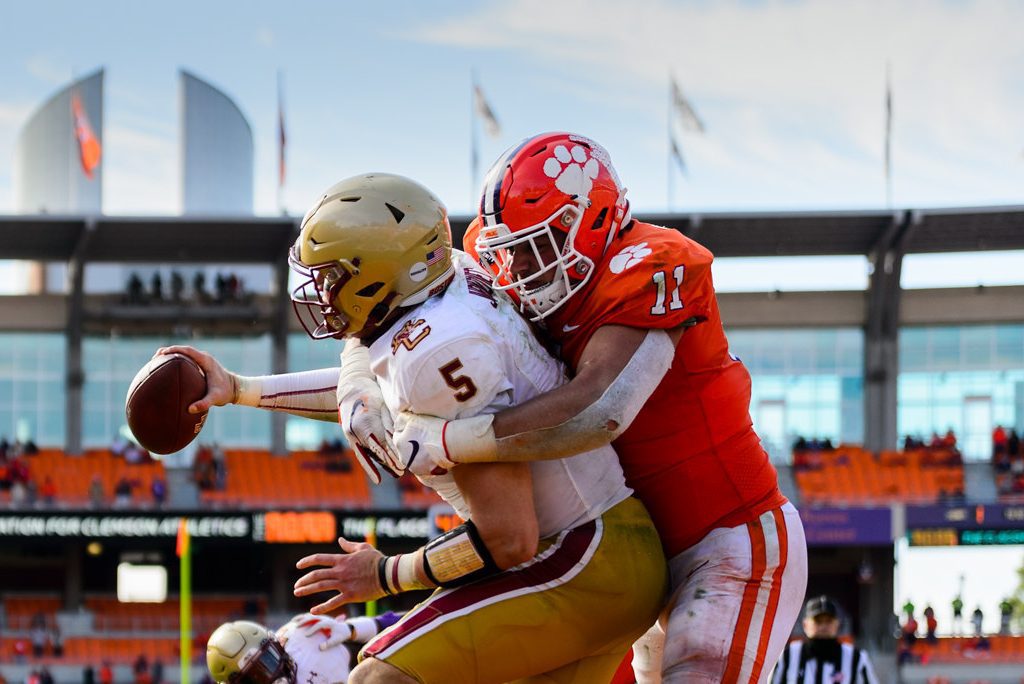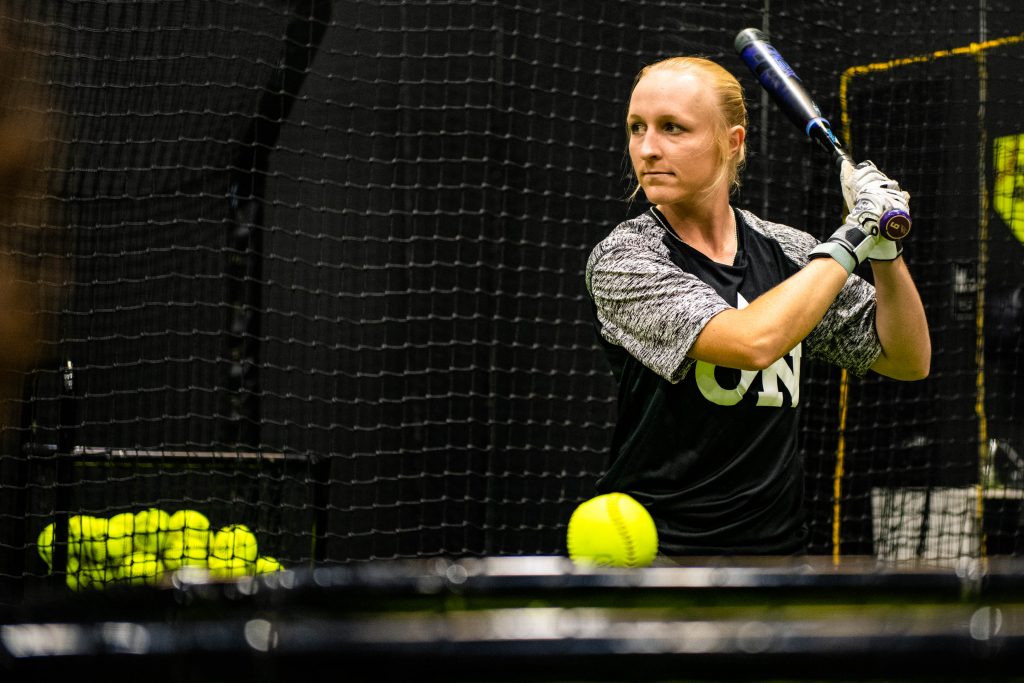Skift Take
Travel companies and destinations need to do extensive research and pay attention to more than the biggest sports — football and men's basketball — to find the right athletes who will be worthy returns on the promotional investments.
When the National Collegiate Athletic Association announced on June 30 that all athletes under its umbrella would be permitted on the very next day to receive benefits based off of their “name, image and likeness,” the floodgates opened for collegiate athletes in the United States to finally earn money based on their status as student-athletes.
Not surprisingly, several companies wasted little time in inking so-called NIL deals with elite NCAA athletes — including a growing number in the travel industry. University of Oregon defensive end Kayvon Thibodeaux and University of Pittsburgh quarterback Kenny Pickett have already reached deals with United Airlines and the Oaklander Hotel, respectively.
And it’s likely those deals represent the tip of the iceberg as several experts feel travel and tourism companies will increasingly look to partner with NCAA stars to help them reach targeted markets, including alumni and younger athletes.
Join Us at Skift Global Forum in NYC September 21-23
Why have travel and tourism businesses gotten into the act?
“I think it’s brand recognition. It enables hotels and airlines to connect with potential customers who follow the school (and) the athlete,” said Timothy Derdenger, an associate professor of marketing and strategy at Carnegie Mellon University’s Tepper of Business who has, among other things, researched Tiger Woods’s impact on Nike’s golf business.
“Name, Image and Likeness from the company perspective is a pure marketing play — tying your product, service or company to another brand, in this case, the athlete to benefit from that increased awareness.”
Certainly, the NIL market is shaping up to be enormous — at least a $1 billion-a-year industry, according to Blake Lawrence, the CEO and founder of Opendorse, a sports tech company that helps connect athletes with NIL opportunities — if it isn’t already. INFLCR, a platform that works with more than 170 NCAA Division I athletic departments to help athletes land NIL opportunities, saw a flurry of first month activity. Athletes at institutions partnered with the Alabama-based company reported more than 1,300 NIL transactions in July.
choosing endorsers
So how are travel and tourism companies determining which athletes to partner with? Perceived popularity is obviously a huge factor. “Unless the owner or marketing director of the company has a personal relationship with an athlete, the majority will be seeking athletes with a large following either because they are good with social media and are stars of the team,” said Lisa Delpy Neirotti, an associate professor of sport management at the George Washington University School of Business.
Meanwhile, it may sound obvious, but Derdenger states that companies will target teams and athletes with a deep connection to their product.
“You’re not going to get some basketball player to promote a golf resort in Oregon. You’re going to get a golfer from the University of Oregon or from the national championship team that year to promote your resort,” he said.
One tourism brand that has definitely reached out to athletes with deep connections to not only targeted markets but its core products is Orlando North, the destination marketing organization for Seminole County, Florida. The DMO has inked NIL deals with numerous athletes with Seminole County ties to promote its “Game On” campaign, which was created to inform event organizers, families and athletes that it had reopened for sports tournaments, said tourism director Gui Cunha.
“We’ve been very strategic in our approach where we’re looking at, ‘Okay. Softball has been the biggest need in our content library,’” Cunha said.
So to fill that need, Orlando North inked a $2,000 deal with one of the biggest names in college softball — Florida State University’s Kaley Mudge, who broke the college softball world series record for hits during the 2021 edition. The DMO is working with Mudge and other endorsers — such as former James Madison University star Odicci Alexander — to help Seminole County attract women’s sports tournaments as part of the “Game On” campaign.
While Cunha believes big names like Mudge and Alexander make Seminole Country an appealing destination for softball players, what do those endorsers do for Orlando North? Cunha answered they promote Seminole County, where sports tourism has generated more than $151 million since the construction of athletic complexes in 2015. But the athletes do something more important.
“What they do is they provide us with the content that we need to promote. So where we had maybe 10 or 20 authentic photos or assets, now we’re in the hundreds after these NIL deals,” he said. “The true value for us is having the assets to now tell the story over a longer period of time.”
Cunha added the NIL deals have been successful for Seminole County in other areas, such as a jump in followers on platforms like YouTube and increased engagement rate after promotional material has been posted.
whom to target
Seminole County is using NCAA athletes to reach out to a younger audience, which doesn’t surprise Thilo Kunkel. The Temple University professor believes that’s one of the benefits of travel and tourism companies working with student-athletes.
“I think (travel companies) are certainly going to benefit particularly because they are reaching a very specific target audience,” said Kunkel, who teaches at Temple’s School of Sport, Tourism and Hospitality Management and Hospitality Management and directs its Sports Industry Center.
That specific target audience Kunkel was referring to is young and generally likes to be active during their travels. So he believes travel brands specializing in active excursions — citing activities like sufing and rock climbing — would do well to establish parternships with student-athletes since they have large followings who love sports.
However, Carnegie Mellon’s Derdenger believes that travel and tourism companies will target more than a younger market. “If you’re going after the college quarterback of the local team, that’s going to have a big draw on not just the 18-24 year olds, but also the alumni of all demographics that follow the football team,” he said.
So he views travel brands view partnernships with NCAA stars as a way to reach out to the alumni of the athletes’ school. Not surprising, considering the alumni are the ones who have the money to spend on flights and at resorts. Certainly, more so than most college students.
But Kunkel sees travel and tourism companies utilizing student-athletes to reach another market: prospective overseas visitors. He believes international student-athletes — especially those coming from markets travel brands are targeting — have great opportunities to do well in NIL deals. Indeed, Cunha cited Canada as a market Orlando North will focus on as two international airlines, Flair and Swoop, are flying into Seminole County.
But Kunkel noted the issue of whether international travel student-athletes can benefit from NIL deals is definitely fuzzy. While Orlando North did agree to an NIL deal with Japanese golfer Minori Nagano from Seminole State College, Cunha admits he relies on the compliance offices of the athletes’ institutions before proceeding with any agreements with international athletes.
Money matters
So how much are student-athletes who have agreed to deals with travel and tourism companies being paid? In many cases, not much.
While Orlando North is paying Mudge $2,000 because she offered services like a podcast interview as well as photo and video shoots in addition to being a major softball star, everyone else who has signed NIL deals with the DMO is getting under $500. Certainly, entering into partnerships with elite college athletes won’t cripple Orlando North financially — as it’s spending less than one perfect of its budget toward those deals, Cunha said.
While stories like University of Alabama quarterback Bryce Young earning close to $1 million in NIL deals before ever having started a game at the collegiate level are the first to jump out at fans, the figure Cunha gave for Orlando North’s typical NIL deal is in line with what most student-athletes have gotten. The average Division I athlete using Opendorse in July earned $471 while the monthly median figure was only $35.
But despite generally not being lucrative, the opportunities offered by travel companies for student-athletes will nonetheless be valuable. George Washington’s Delpy Neirotti, who has extensive experience in the field of sports tourism, envisions athletes being the recipients of in-kind deals for possibly free hotel rooms or transportation.
Kunkel has already seen student-athletes take advantage of similar opportunities — in one case, nearby athletes working a hotel on the Jersey Shore. “They are obviously not thousand dollar sponsorship deals but they are a hundred dollars here and there,” he said.
And finally, as evidenced by the athletes Orlando North signed, those opportunities abound for athletes who may not feature regularly on ESPN. Derdenger provides one hypothetical example.
“Think about a company that runs a whitewater rafting tour down the Colorado River,” he said. “You could imagine getting a swimmer from an elite university in California, Nevada or Arizona that has that brand recognition. Having (that swimmer) come and endorse that service you are providing down the Colorado River because there’s a water connection.”
“Depending upon the sector and the service’s that the company is offering, I think there’s a wide array of opportunities outside of basketball and football players.”
The Daily Newsletter
Our daily coverage of the global travel industry. Written by editors and analysts from across Skift’s brands.
Have a confidential tip for Skift? Get in touch
Tags: advertising, ncaa, sports, sports tourism
Photo credit: College football stars at institutions like Boston College (left) and Clemson (right) will surely look to take advantage of any NIL opportunities. TigerNet.com / Flickr

